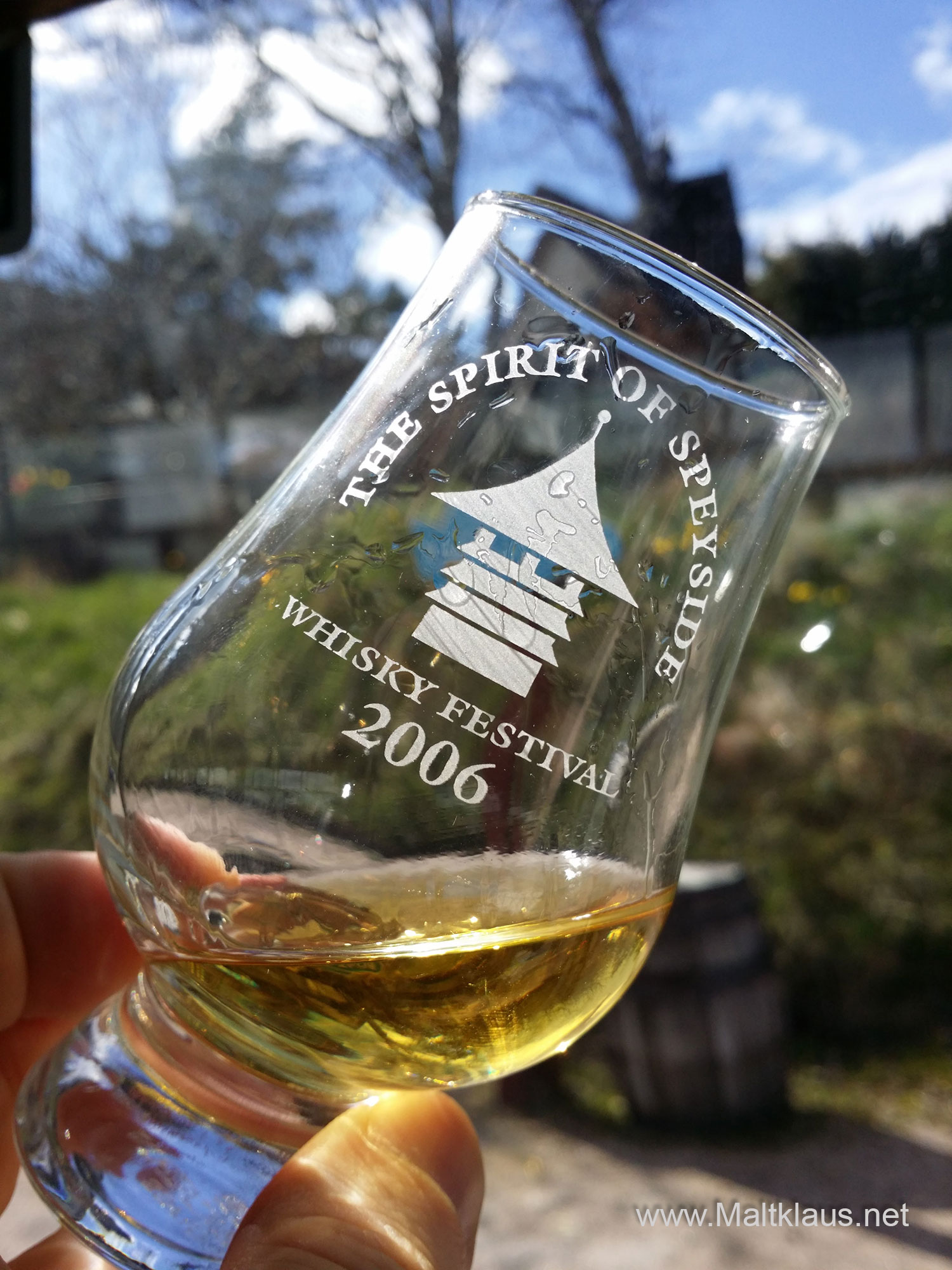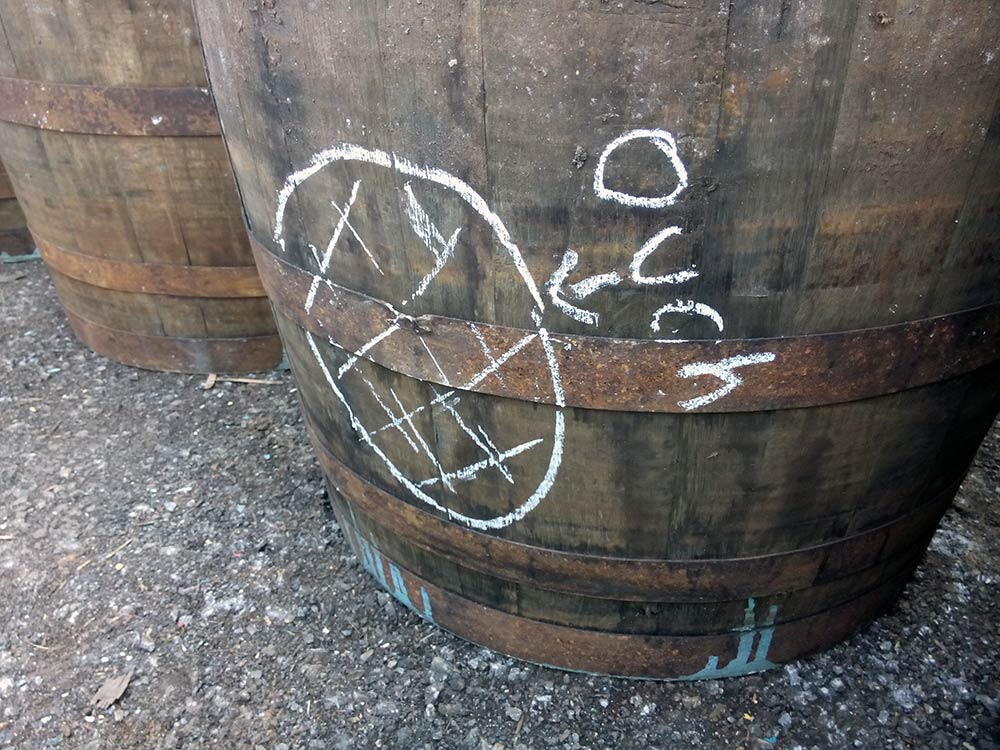After the two rather long and eventful previous days, our group was keen on taking it easy on the third day. The entire day was centred around a steam train ride and everything else was planned around it.
Coleburn

So we started off as a group of four, Kat Presley, my brother and I hitching a ride with Crystal Coverdale to the decommissioned (since 1985) Coleburn distillery. What’s so interesting about an old, dismantled distillery with no equipment left inside? The warehouses! The re-founded independent bottler Murray McDavid (the original company was sold in the course of the Bruichladdich takeover in 2013) bought them in 2013 and now they’re used to mature their casks of whisky – stock they bought from the original Murray McDavid owners. We were met there by distiller and master blender David Simpson, who prefers the title of “Whisky Creation”. After an introduction to the company we were led into the warehouses and were free to roam around and look at all the different casks stored on site (including bourbon and they also talked about vodka and rum). The oldest cask on site is a 1962 North British, in case you were wondering! Well, it’s a traditional dunnage warehouse on two floors, as you can see in the pictures. I’ve seen my fair share of warehouses, so instead of peeking at all the casks and labels I mostly engaged in conversations with David and another lad – Tony Whitnock, former excise officer for Coleburn and other distilleries, joined our group and had a few stories to tell and confirm (involving “copper dogs” for sneaking out whisky from the warehouses…) which was a nice added touch. That’s the guy you want to sit down with for a few drams and listen to stories of bygone times! Continue reading “Speyside trip 2016: Part three – Coleburn/Murray McDavid – Strathspey steam railway tasting”



















